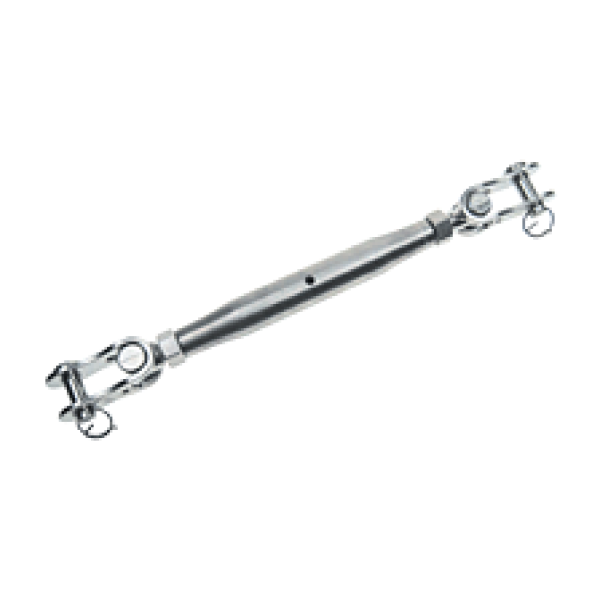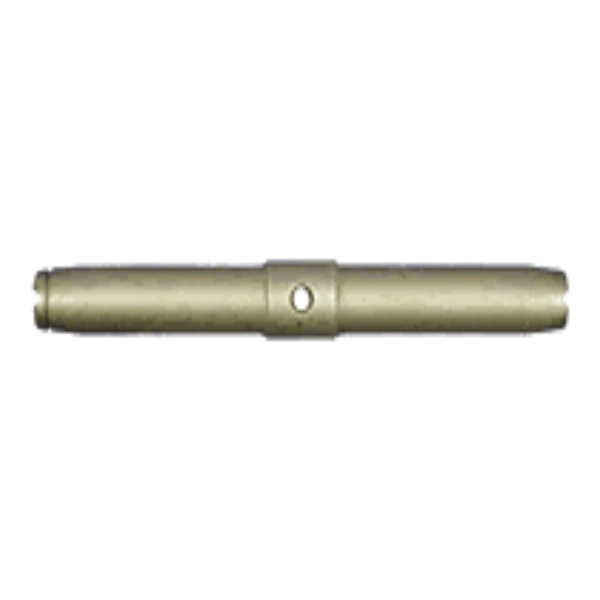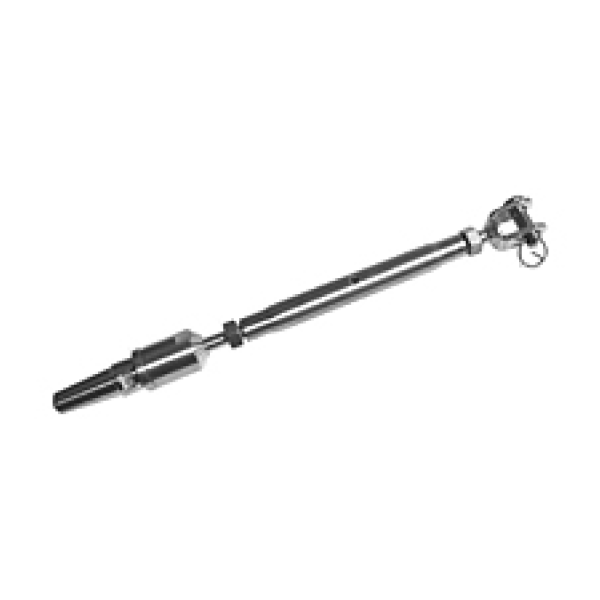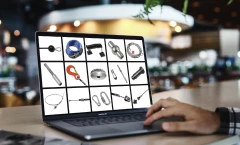Turnbuckles are rigging hardware used for adjusting the tension of wire ropes and have applications across a wide range of industries, including engineering, aerospace, construction, and marine. Turnbuckles have a left-hand thread on one side and a right-hand thread on the other, allowing them to adjust from open to closed and either tighten or slacken the wire rope or cable’s tension. This opposite threading is why turnbuckles are such a simple yet essential tool; turning clockwise on the wire rope should increase while turning it anti-clockwise will reduce tension.
With so many applications, turnbuckle hardware comes in a variety of types to suit the needs of the particular use. The types of turnbuckle hardware range from light to heavy-duty, come in various materials from galvanized to stainless steel, and can be open-body or closed.
What is Turnbuckle Hardware?
Turnbuckle hardware is used with various swaged endings and other wire rope hardware components, such as eyes, shackles and jaws, which determine how the wire rope is connected to the turnbuckle. Eyes, jaws, and hooks are ideal for connecting to wire rope loops for tensioning flexible wire ropes. A dead-end connection, such as a swage socket or a threaded stud integrated into the turnbuckle, is more appropriate for rigid wire ropes.
The working load limit (WLL) for turnbuckle hardware is typically calculated with a 5:1 safety factor suitable for general-purpose usage. When placing orders for specific applications, it’s vital that the WLL for the wire rope and turnbuckle hardware are known.
Pro tip: Thread galling occurs when the friction between male and female thread causes abrasion or even the fusing (cold welding) of the metals. When working with stainless steel turnbuckle hardware, you can prevent thread galling under load by using anti-seize lubricant.
Different Types and Applications of Turnbuckle Hardware
Considering the vast array of industries that require turnbuckles for secure tensioning of wire rope and safe load-bearing, it’s unsurprising that there are many types of turnbuckle hardware to meet specific applications, as well as multi-purpose and general-use turnbuckles. Here we’ll take a look at some of the most common types of turnbuckle hardware and their use cases.
Light Duty Midget Turnbuckles
These are designed for lighter-duty applications and have much lower WLL than a forged turnbuckle as they are only used for narrower diameter cabling. Eyes and hooks are usually“turned and bent” rather than forged or cast. Midget turnbuckle hardware can be found in applications requiring tension adjustment of very light loads.
- Body Type: Open Body
- Body Material: Zinc Body, Aluminum Body, Stainless Body
- End Types: Eye & Eye, Hook & Hook, Hook & Eye
- Product Catalog: Midget Turnbuckles, Wire Rope - Lexco Cable
- Application Example: Adjusting tension on E-Stop (emergency stop) pull cords for conveyors
Drop Forged Hot Dip Galvanized Steel Turnbuckles
In drop forging, steel is heated until it’s formable and forged into its shape in several dies. For turnbuckle hardware, this creates a heavy-duty component that can be safely used across several applications.
- Body Type: Open Body
- End Types: Eye & Eye, Hook & Hook, Hook & Eye, Jaw & Jaw, Jaw & Eye
- Specification Standard: FF-T-271; ASTM F1145-92
- Product Catalog: Made in USA Turnbuckles by Chicago Hardware & Fixture On Lexco Cable Manufacturers; Imported Galvanized Drop Forged Turnbuckles On Lexco Cable Manufacturers
- Application Example: Below-the-hook rigging
Stainless Steel Open Body Turnbuckle
Open-body turnbuckle hardware is the more common type, and means that the threads can be seen within the body of the turnbuckle. Stainless steel is a popular choice for marine rigging due to its higher corrosion resistance.
- Body Type: Open Body
- End Types: Eye & Eye, Hook & Hook, Hook & Eye, Jaw & Jaw, Jaw & Eye
- Product Catalog: Stainless Steel Open Body Turnbuckles On Lexco Cable Manufacturers
- Application Example: Marine Rigging (naval boats, yachts, off-shore platforms)


Stainless Steel Closed Body
Apart from a stylistic choice, closed-body turnbuckle hardware is used as it has a smaller deployment envelope and is useful where space is an issue. In addition, the closed body can protect the threads from damage or corrosion, such as in situations with high debris.
- Body Type: Pipe Body i.e., closed body
- End Types: Toggle Jaw, Fixed Jaw
- Product Catalog: Stainless Steel Closed Body Turnbuckles On Lexco Cable Manufacturers
- Application Example: Architectural features
Cable Railing Turnbuckles
Cable railing turnbuckle hardware is designed to tighten the wire rope running between posts in a cable railing system. As these serve an architectural rather than a significant load-bearing purpose, closed-body type turnbuckles are used.
- Body Type: Closed Body
- End Types: Various
- Product Catalogs:
- Application Example: Deck railings, modern stair railings


Swageless Turnbuckle
Swageless turnbuckle hardware is intended for lighter-duty uses, such as marine cabling and architectural features, where swaging equipment isn’t available. They are not designed for lifting or critical safety applications.
- End Types: Various
- Body Type: Open Body & Closed Body
- Product Catalog: Swageless Fittings On Lexco Cable Manufacturers
- Application Example: Cable bracing, fabric structures, mast stays
Marine Rigging Turnbuckles
Also known as stay adjusters, these turnbuckles are specifically designed for marine cable applications. They are machine-swaged directly onto the cable and are designed for heavy-duty applications.
- End Types: Various
- Body Type: Open Body & Closed Body
- Product Catalog: Marine Rigging Turnbuckles On Lexco Cable Manufacturers
- Application Example: Sailboats and marine-inspired architecture

MS21251 Turnbuckle Body
Replacing the NAS649 for military grade applications, MS21251 is a standard that defines the specifications and features of turnbuckle bodies. This turnbuckle hardware for military applications utilizes two locking clips for safety, rather than lock-wire.
- Material: Aluminum, Brass, Cad Plated Steel
- Body Type: Closed Body
- Product Catalog: Turnbuckle Body MS21251 On Lexco Cable Manufacturers
- Application Example: Military and aerospace

Conclusion
Turnbuckles adjust wire rope tension through inverse threading at both ends to tighten or loosen a cable. Turnbuckle hardware has many applications across several fields to help attach heavy loads for lifting, secure wire rope assemblies such as marine rigging and hold architectural features such as cable railing in place.
A wide variety of turnbuckle hardware fits all of these different applications. David Lexco, Vice President of Lexco, takes a closer look at the various types and applications of turnbuckle hardware in these in-depth videos on architectural turnbuckle hardware and rigging turnbuckle hardware.
At Lexco Cable, we’re proud to have the capacity to deliver exactly what our customers need for their specific applications and the expertise to understand what those needs are. For any queries you might have about turnbuckle hardware and finding the right components for your application, contact our dedicated team.











